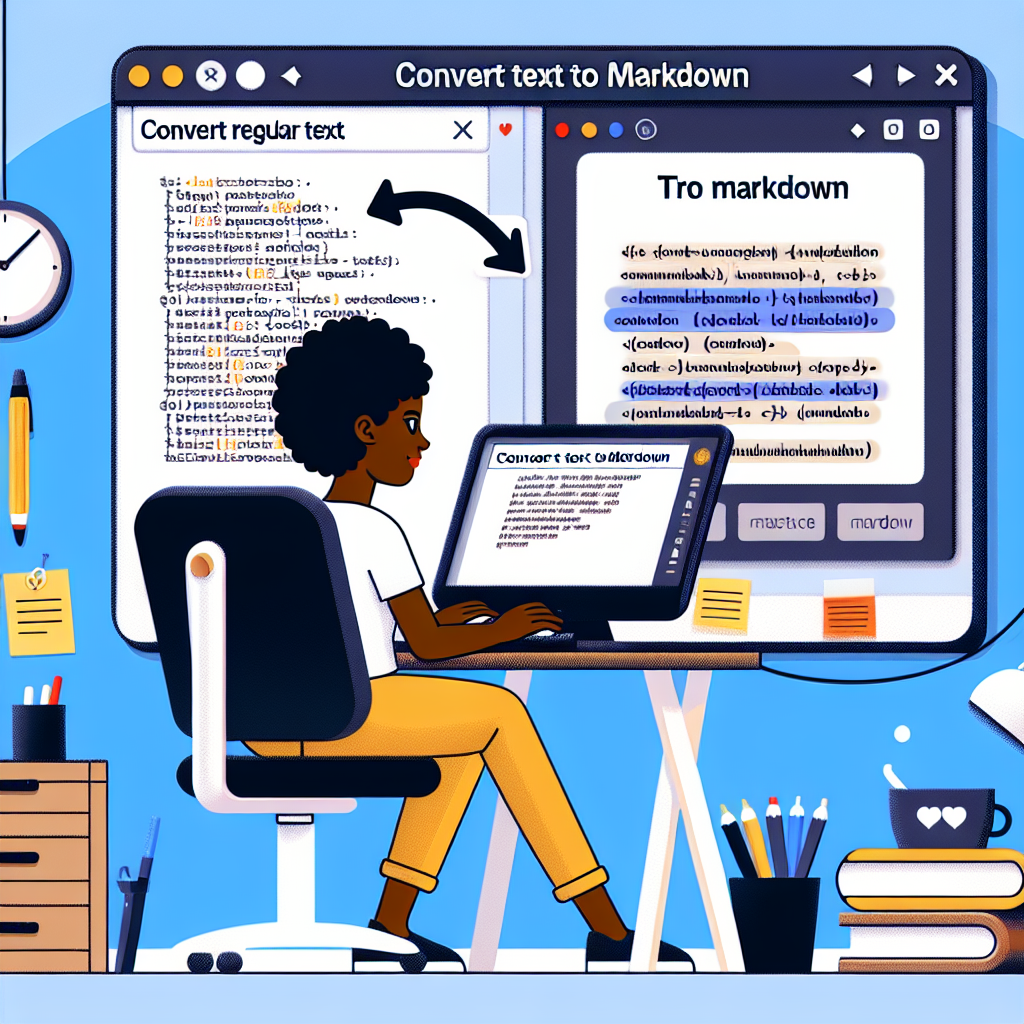How to Convert Text to Markdown
Convert plain text to Markdown using simple syntax for headers, emphasis, lists, links, and images. Markdown enhances readability and flexibility, making it ideal for documentation and web content.

"Need to convert or format Markdown? Check out our free tools– they're easy to use and always available."
Introduction
Markdown is a lightweight markup language that allows you to format plain text with simple syntax. It's widely used for writing documentation, creating web content, and organizing notes due to its ease of use and readability. This article will guide you through the process of converting plain text to Markdown.
What is Markdown?
Markdown was created by John Gruber in 2004 with the goal of enabling people to write using an easy-to-read and easy-to-write plain text format that can be converted to HTML. Markdown syntax includes elements like headers, emphasis, lists, links, and more.
Why Convert Text to Markdown?
- Readability: Markdown is designed to be readable as-is, without needing to process it into another format.
- Flexibility: Markdown can be easily converted into HTML and other formats.
- Simplicity: The syntax is straightforward, making it accessible to everyone.
Basic Markdown Syntax
Here are some basic Markdown elements and how to convert your text to include them:
-
Headers:
# Header 1 ## Header 2 ### Header 3 -
Emphasis:
- Italic: Wrap text in single asterisks or underscores (
*italic*or_italic_). - Bold: Wrap text in double asterisks or underscores (
**bold**or__bold__).
- Italic: Wrap text in single asterisks or underscores (
-
Lists:
-
Unordered List
: Use asterisks, plus signs, or hyphens.
- Item 1 - Item 2 -
Ordered List
: Use numbers followed by a period.
1. First item 2. Second item
-
-
Links:
[Link text](http://example.com) -
Images:
 -
Code Blocks: ``` Inline code:
codeBlock code:
function example() { console.log("Hello, Markdown!"); }```
Converting Text to Markdown
To convert plain text to Markdown, follow these steps:
- Determine the Structure: Identify how your text should be structured. Is it a header, paragraph, list, link, or image?
- Apply Markdown Syntax: Use the appropriate Markdown syntax to format each part of your text. Refer to the basic syntax section for guidance.
- Review and Edit: After applying Markdown, review your document to ensure it appears as expected. Make any necessary adjustments.
Example Conversion
Here’s a simple example demonstrating the conversion of plain text to Markdown:
Plain Text:
Project Overview
The project aims to develop a web application. Key features include:
- User Authentication
- Data Visualization
- Real-time Notifications
For more info, visit our website.
Markdown:
# Project Overview
The project aims to develop a web application. Key features include:
- User Authentication
- Data Visualization
- Real-time Notifications
For more info, [visit our website](http://example.com).
Conclusion
Converting text to Markdown enhances readability and flexibility, making it easier to create well-structured, visually appealing content. By following the basic syntax rules and applying them to your text, you can efficiently produce Markdown documents that are both easy to read and versatile.



Comments ()